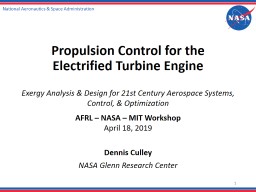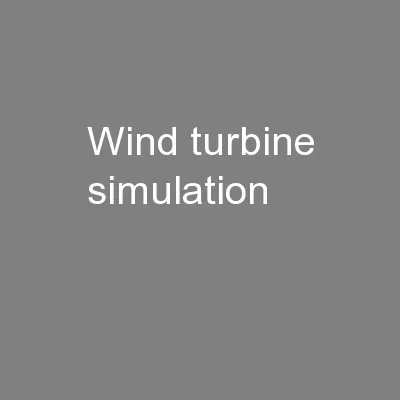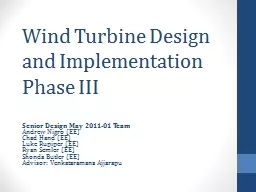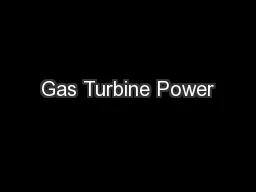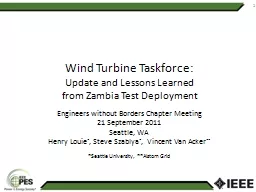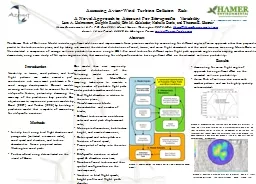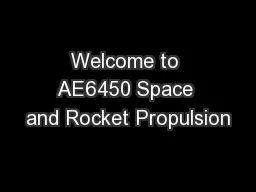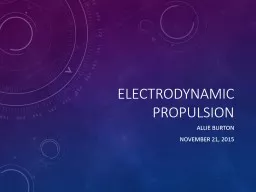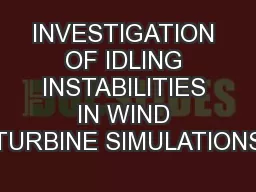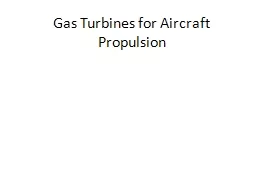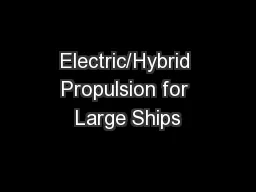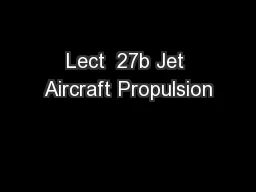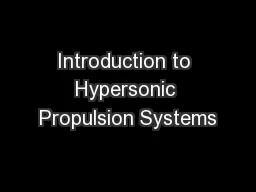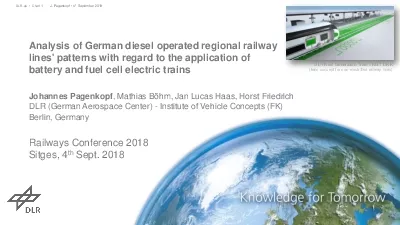PPT-Propulsion Control for the Electrified Turbine Engine
Author : valerie | Published Date : 2023-07-22
Dennis Culley NASA Glenn Research Center Exergy Analysis amp Design for 21st Century Aerospace Systems Control amp Optimization AFRL NASA MIT Workshop April
Presentation Embed Code
Download Presentation
Download Presentation The PPT/PDF document "Propulsion Control for the Electrified T..." is the property of its rightful owner. Permission is granted to download and print the materials on this website for personal, non-commercial use only, and to display it on your personal computer provided you do not modify the materials and that you retain all copyright notices contained in the materials. By downloading content from our website, you accept the terms of this agreement.
Propulsion Control for the Electrified Turbine Engine: Transcript
Download Rules Of Document
"Propulsion Control for the Electrified Turbine Engine"The content belongs to its owner. You may download and print it for personal use, without modification, and keep all copyright notices. By downloading, you agree to these terms.
Related Documents

